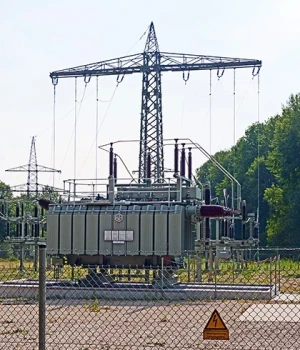U.S. Wind Energy Investment Surges While Solar Stagnates

In recent years, the U.S. energy landscape has been undergoing a dramatic transformation, characterized by significant shifts in investment patterns across renewable energy sectors. According to a recent BloombergNEF report, U.S. investment in wind energy has soared, while solar energy investment has seen a noticeable stagnation. This divergence highlights broader trends within the renewable energy sector and underscores various factors influencing these dynamics.
Wind Energy Investment on the Rise
The BloombergNEF report reveals a remarkable surge in U.S. wind energy investments, with figures reaching unprecedented levels. This uptick in wind energy investment is driven by several key factors:
-
Technological Advancements: Advances in wind turbine technology have dramatically increased the efficiency and output of wind farms. Innovations such as larger turbines and improved blade designs have made wind energy more competitive and cost-effective.
-
Favorable Policies and Incentives: Federal and state policies have played a crucial role in promoting wind energy. The extension of the Production Tax Credit (PTC) and various state-level renewable energy standards have provided financial incentives for wind projects, boosting investor confidence.
-
Growing Energy Demand: As the demand for clean energy continues to rise, wind energy has emerged as a scalable solution capable of meeting large portions of the energy needs. This growing demand has attracted substantial investment from both public and private sectors.
-
Market Maturity: Wind energy has reached a level of market maturity that solar energy is still striving to achieve. This maturity has resulted in lower costs and more predictable returns on investment, making wind projects an attractive proposition for investors.
Solar Energy Investment Faces Challenges
In contrast to the booming wind sector, solar energy investment has faced a period of stagnation. Several factors contribute to this slowdown:
-
Supply Chain Disruptions: The solar industry has experienced significant supply chain disruptions, particularly with regard to photovoltaic (PV) panels and related components. These disruptions have led to higher costs and delays, affecting overall investment in solar projects.
-
Policy Uncertainty: Although solar energy has benefited from various federal and state incentives in the past, recent policy uncertainty has created a challenging environment for investors. Changes in tax credits, tariffs on imported panels, and fluctuating regulatory frameworks have added complexity to the investment landscape.
-
Market Saturation: In certain regions, the solar market has become saturated, with a high level of competition driving down prices and profit margins. This saturation has made it more challenging for new solar projects to achieve financial viability, resulting in a slowdown of investment.
-
Technological Stagnation: While solar technology has made significant strides, it has not advanced as rapidly as wind technology in recent years. This relative stagnation has led to fewer breakthroughs in cost reduction and efficiency improvements, impacting investor enthusiasm.
Implications for the Future
The divergence in investment trends between wind and solar energy has several implications for the future of renewable energy in the U.S.:
-
Diversification of Energy Portfolios: Energy companies and investors may need to diversify their portfolios to balance the risks associated with fluctuating investment trends. While wind energy offers promising opportunities, solar energy remains a crucial component of the renewable energy mix.
-
Policy and Regulatory Support: To revitalize solar investment, there is a need for consistent and supportive policies. Clear regulatory frameworks and incentives can help mitigate uncertainties and encourage renewed investment in solar technologies.
-
Innovation and Research: Continued investment in research and development is essential for both wind and solar energy sectors. Technological innovations can drive down costs, improve efficiency, and unlock new opportunities for investment.
-
Regional Variations: Investment trends may vary by region, influenced by local policies, resource availability, and market conditions. Understanding these regional dynamics can help stakeholders make informed decisions and capitalize on emerging opportunities.
In conclusion, while the surge in wind energy investment reflects positive developments in the sector, the stagnation in solar energy investment highlights ongoing challenges. Addressing these challenges through supportive policies, technological advancements, and strategic investment approaches will be critical for ensuring the continued growth and success of both wind and solar energy in the U.S.








